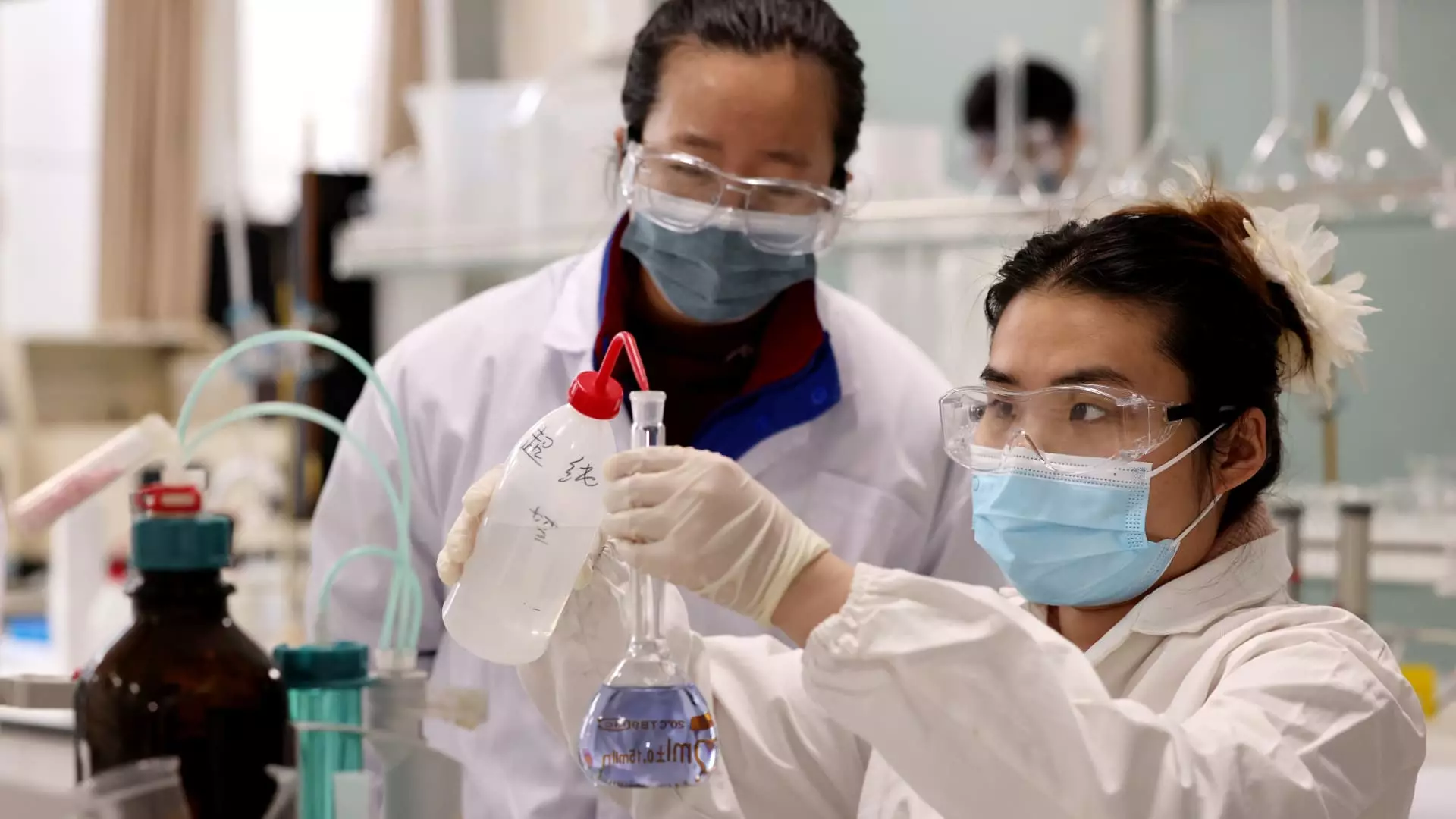As the world grapples with challenges ranging from climate change to pandemics, the competition between the United States and China is shifting focus from classic domains like military might and economic strength to the complex and rapidly evolving field of biotechnology. While people have closely followed the interplay between the two nations in areas such as artificial intelligence and semiconductors, recent studies reveal that China’s emergence as a biotechnology powerhouse poses a serious risk to U.S. dominance in this critical sector. The Harvard Belfer Center’s report provides a cautionary tale about the speed at which the balance of power can shift, underscoring a concerning narrative: China might soon outpace the U.S. in biotechnology, a pillar of future innovation and healthcare.
The Implications of a Changing Landscape
The implications of losing the biotechnology race could be profound for the United States. Biotechnology is not just an umbrella term for medical advancements; it’s the backbone of essential sectors like agriculture, pharmaceuticals, and environmental sustainability. A recent report by the U.S. National Security Commission on Emerging Biotechnology paints a vivid picture of potential disaster: if China experiences a “ChatGPT moment” in biotechnology, America could find itself trailing irreversibly, despite its historical lead. This notion should not be lightly dismissed; it poses risks not only to public health and innovation but also to national security, as countries vie for leverage in crucial and sensitive areas.
The urgency presented in these reports could not be starker. What is needed is a dual strategy: ramping up U.S. innovation while simultaneously finding ways to slow China’s rapid progress. The bipartisan commission’s proposal to allocate at least $15 billion over the next five years for bolstering the domestic biotechnology sector is a serious call to action—and perhaps a last chance for the U.S. to reclaim its edge.
China’s Biotech Engine: Why It Works
Given the daunting challenge that U.S. biotech now faces from China, it’s worth examining what has fueled China’s advancement in this arena. One significant factor is the Chinese government’s aggressive, cohesive, and multi-year plans that mandate substantial investments in key technologies. Enhanced by a more lenient regulatory regime, this centrally-mandated acceleration of biotech initiatives has propelled China into a position where it is not only catching up but could potentially leapfrog ahead.
China’s strength lies in its robust pharmaceutical manufacturing capabilities and human capital. With a larger population of highly skilled scientists and researchers than the United States, China isn’t merely maintaining pace; it’s iterating and innovating at speed. Major pharmaceutical companies from the U.S. and Europe recognize this reality, funneling billions into securing ground-breaking Chinese-developed drugs. For instance, AstraZeneca’s $2.5 billion investment in a R&D center in Beijing symbolically underscores a sobering acceptance by major Western players that Chinese innovations could indeed come to dominate crucial healthcare markets.
The American Response: Challenges Ahead
Despite a clear acknowledgment of this urgent threat, the response from the U.S. government has been less than cohesive. Unlike China’s targeted approach, the American government lacks an intentional strategy for biotechnology. This gap in foresight and action could spell disaster. As layoffs grow within the biotech hubs of Boston and Cambridge, the sense of complacency within the U.S. is palpable. America cannot afford to rest on its laurels; it must galvanize innovative efforts and align stakeholders across the biotech industry.
Current reports also highlight how geopolitical tensions complicate collaboration between the two rivals, making cooperation in biotechnology appear increasingly unlikely. Schwab’s observation is chilling: as the U.S. continues to apply pressure on China, the likelihood of impactful partnerships diminishes—not just between the two nations but across the globe.
Global Interdependence in a Fractured World
It would be overly simplistic to suggest that the future of biotechnology development is merely a competitive race between the U.S. and China. The services and products derived from this sector will fundamentally require a global framework. Innovative biotech firms, like Insilico Medicine, are capitalizing on and navigating the unique strengths of various markets, including utilizing AI across China, North America, and the Middle East for drug discovery. Talent and resources know no borders, and the future of biotechnology will hinge not just on national capabilities but on a collaborative ethos that transcends geopolitical divides.
Yet caution is warranted; as Yang Fan astutely pointed out, navigating diverse regulatory landscapes can create unfair advantages, allowing the best companies to exploit differences to their benefit while others may falter. This dichotomy may lead to an unbalanced global market where the most agile and resourceful companies, particularly those in China, thrive at the expense of older, more bureaucratic entities in the U.S.
In an increasingly interconnected world, where biotechnology may very well be the power broker of the future, complacency is an enemy America cannot afford. The U.S. must rethink its strategies, act with urgency, and engage critically—not just to sustain its leadership but to safeguard its future in an era defined by its biological consequences.

